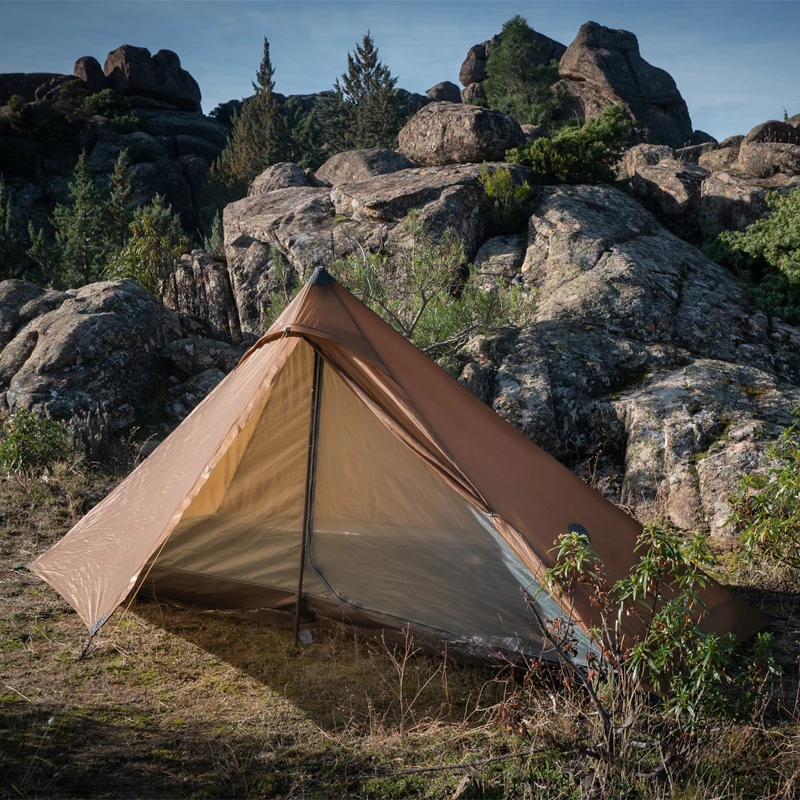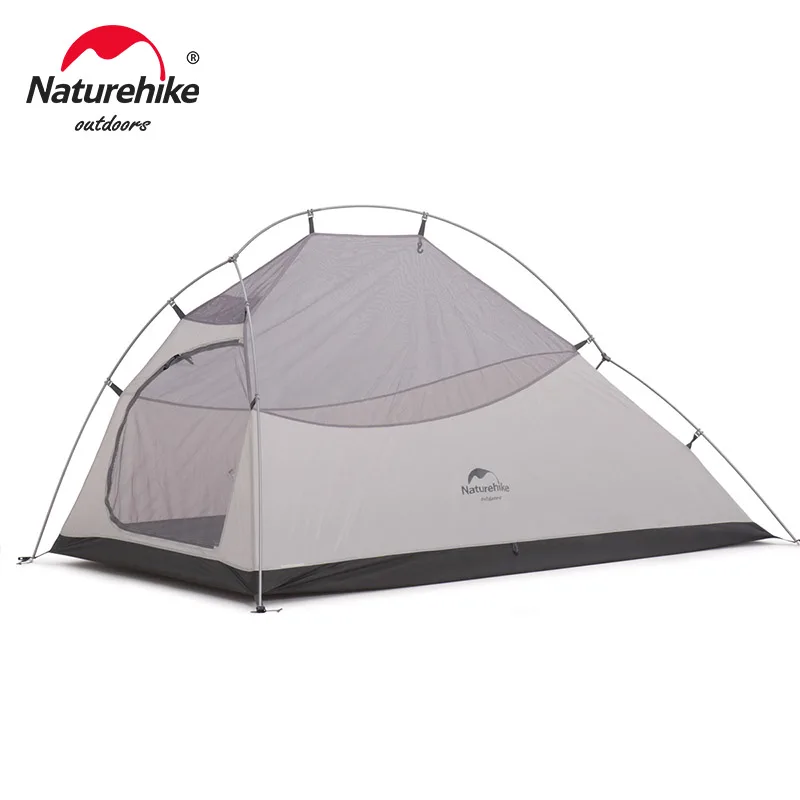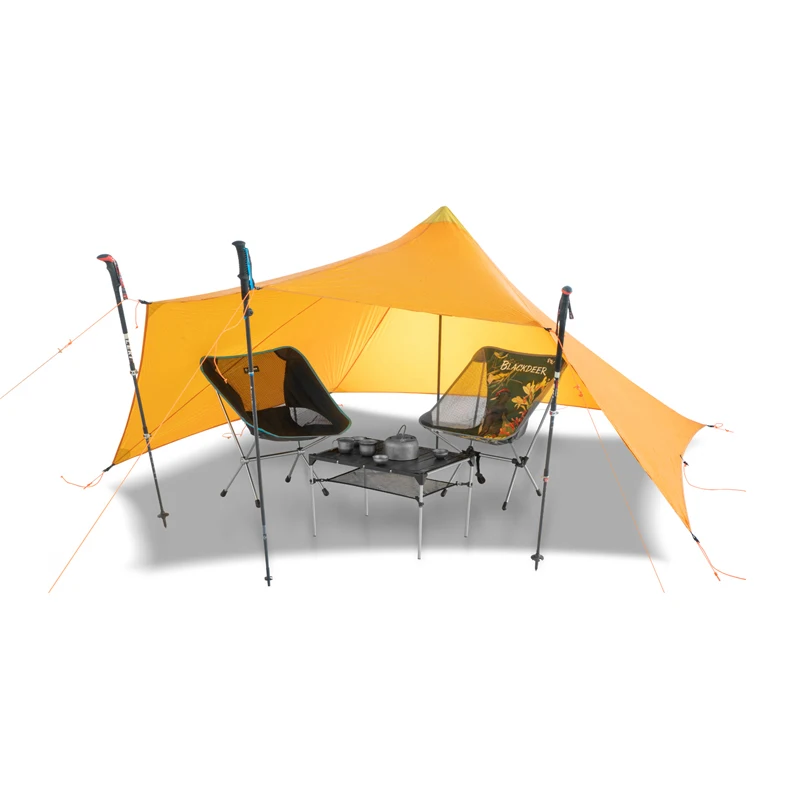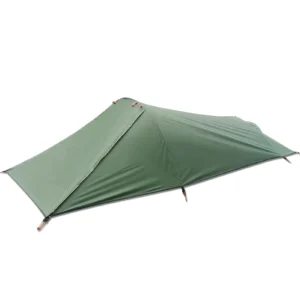Understanding Material Science in Ultralight Shelters
When you’re carrying your home on your back for miles on end, every ounce matters. This is why the materials used in trekking shelters have become a crucial consideration for outdoor enthusiasts. Today’s lightweight shelters can weigh under 2 pounds, a dramatic improvement from traditional tents that often exceed 4 pounds. This weight reduction hasn’t happened by accident—it’s the result of advanced material science specifically developed for outdoor gear.
The fundamental challenge in shelter design is balancing three competing factors:
- Weight: How light can we make it?
- Durability: Will it withstand harsh conditions?
- Protection: Does it keep you safe from elements?
Your trekking style and environment drastically impact which materials will serve you best. Someone hiking through the rainy Pacific Northwest needs different material properties than someone exploring the dry, sun-baked desert Southwest.
Over the past decade, outdoor material science has evolved dramatically, introducing fabrics that would seem almost magical to backpackers of previous generations. Understanding these materials helps you make informed decisions about the shelter that will accompany you on your adventures.
In this guide, we’ll explore the materials that make lightweight tents for long treks possible and examine what gives lightweight tent trekking its distinctive performance characteristics.
Core Shelter Fabrics: Performance Characteristics
Dyneema Composite Fabric (DCF)
Dyneema Composite Fabric (formerly called Cuben Fiber) represents the premium end of ultralight shelter materials. This high-tech fabric consists of Dyneema fibers—the strongest fibers per weight in the world—sandwiched between polyester films. This creates an incredibly lightweight yet strong laminate material.
Key Properties:
- Unmatched Strength-to-Weight Ratio: DCF is approximately 15 times stronger than steel by weight
- Waterproofing: 100% waterproof with hydrostatic head ratings typically exceeding 8,000mm
- Zero Water Absorption: Unlike nylon, it doesn’t absorb water and gain weight when wet
- No Stretch: Maintains taut pitch even during rainstorms
- Ultralight: Available in weights as low as 0.34 oz/sq yd (8D) up to 0.8 oz/sq yd (50D)
- UV Resistant: Superior resistance to degradation from sunlight compared to nylon
However, DCF comes with some notable drawbacks:
- Expense: Costs significantly more than other shelter fabrics
- Packability: Doesn’t compress as small as woven fabrics
- Noise: Can be crinkly and noisy in wind or when moving around inside
- Abrasion Vulnerability: Particularly in thinner variants
DCF has revolutionized ultralight trekking shelters by enabling significant tent materials pack weight balance that was previously impossible. The material doesn’t need to be hemmed or seam-sealed because water cannot penetrate the laminated edges of the fabric.
Silnylon: The Versatile Standard
Silicone-impregnated ripstop nylon (silnylon) has been the backbone of lightweight shelter design for decades. This fabric consists of ripstop nylon treated with silicone on both sides to enhance waterproofness and durability.
Key Properties:
- Composition: Nylon fibers woven in a ripstop pattern, then impregnated with silicone
- Weight Range: Typically 1.1-1.5 oz/sq yd depending on denier
- Water Resistance: Hydrostatic head ratings of 1,500-3,000mm depending on quality
- Strength: Excellent tear strength for its weight
- Cost-Effective: Much more affordable than DCF
- Highly Packable: Compresses well for minimal pack space
Limitations:
- Stretch When Wet: Can sag significantly when wet, requiring readjustment
- UV Vulnerability: Degrades from extended sun exposure
- Water Absorption: Absorbs moisture, becoming heavier when wet
- Variable Quality: Performance can vary widely between manufacturers
Silnylon remains popular because it delivers a good balance of weight, performance, and cost. It’s frequently used in many ultralight trekking pole tent designs where its stretch characteristics are less problematic.

Silpoly: The Stable Alternative
Silicone-impregnated polyester (silpoly) represents a newer alternative that addresses some of silnylon’s key limitations. This fabric has been gaining popularity among cottage manufacturers and experienced trekkers.
Key Properties:
- Dimensional Stability: Minimal stretch when wet—a significant advantage over silnylon
- UV Resistance: Superior resistance to sun damage compared to nylon-based materials
- Water Resistance: Similar hydrostatic head ratings to silnylon (1,500-3,000mm)
- Quick-Drying: Dries faster than nylon due to lower water absorption
- Weight: Typically 1.1-1.6 oz/sq yd depending on denier
- Moderate Cost: Generally comparable to silnylon in price
Limitations:
- Strength: May have slightly lower tear strength than equivalent denier silnylon
- Abrasion Resistance: Can be less abrasion resistant than nylon
- Availability: Less common in mainstream products
Silpoly has become increasingly popular for waterproof backpacking tent designs where maintaining tension during wet conditions is crucial. Its stability when wet means you won’t need to get out of your tent during rainstorms to retension sagging fabric.
Polyurethane-Coated Fabrics
Polyurethane (PU) coated fabrics represent the most economical option for lightweight trekking shelters. These materials consist of nylon or polyester with a polyurethane coating applied to one or both sides.
Key Properties:
- Cost-Effective: Significantly less expensive than silicone-treated fabrics
- Good Initial Waterproofing: Hydrostatic head ratings of 1,200-2,000mm
- Easily Seam-Taped: PU coatings accept seam tape for waterproofing
- Weight: Generally 1.5-2.5 oz/sq yd
Limitations:
- Durability Concerns: Susceptible to hydrolysis (chemical breakdown) over time
- Weight Penalty: Typically heavier than silicone-treated fabrics
- Less Breathable: Can contribute to condensation issues
- Shorter Lifespan: Coating may begin to degrade after a few seasons of heavy use
PU-coated fabrics make the most sense for budget-conscious trekkers or those who use their shelters infrequently. Hybrid coatings that combine PU and silicone offer a middle ground with improved durability over standard PU coatings.
Material Performance: Critical Comparisons
To help you understand how these materials stack up against each other, here’s a comparative breakdown of key performance metrics:
| Material | Weight (oz/sq yd) | Waterproofness (mm) | Tear Strength | UV Stability | Sag When Wet | Typical Lifespan | Relative Cost |
|---|---|---|---|---|---|---|---|
| DCF | 0.34-0.8 | 8,000+ | Excellent | Very Good | None | 5-7 years | Very High |
| Silnylon | 1.1-1.5 | 1,500-3,000 | Very Good | Fair | Significant | 3-5 years | Moderate |
| Silpoly | 1.1-1.6 | 1,500-3,000 | Good | Good | Minimal | 3-5 years | Moderate |
| PU-Coated | 1.5-2.5 | 1,200-2,000 | Good | Poor to Fair | Moderate | 2-4 years | Low |
This comparison highlights why there’s no single “perfect” material—each has strengths and weaknesses that make it more suitable for specific conditions and priorities. Understanding the difference between ultralight vs. lightweight tents often comes down to these material choices and their performance characteristics.
Structural Components: Beyond the Fabric
Tent Pole Technologies
While fabrics form the shelter’s skin, the skeletal structure comes from poles that determine its shape, stability, and ability to withstand environmental forces.
Aluminum Alloy Poles:
* Made from aircraft-grade aluminum (typically 7000-series alloys)
* Excellent balance of weight (1.5-2.5 oz per foot) and strength
* Good durability with moderate flexibility
* Field-repairable with pole repair sleeves
* The most common pole material in quality lightweight shelters
Carbon Fiber Poles:
* 20-30% lighter than comparable aluminum poles
* Very rigid with less flex than aluminum
* More brittle—can snap rather than bend under extreme pressure
* More expensive than aluminum alternatives
* Often found in premium ultralight shelters
Trekking Pole Integration:
* Eliminates dedicated poles completely
* Weight savings of 8-16 oz per shelter
* Requires compatible trekking poles
* May provide less structural stability in extreme conditions
For many ultralight enthusiasts, why trekking pole supported shelters make sense comes down to this dual-purpose approach—using gear you’re already carrying to support your shelter.

Essential Hardware: Zippers, Guylines, and Stakes
These small components might seem insignificant, but they can make a substantial difference in both weight and functionality:
Zippers:
* YKK Aquaguard or similar water-resistant zippers add weather protection
* Zipper size (#3 vs #5) impacts weight and durability
* Two-way zippers enhance ventilation options
* Zipper pulls should be glove-compatible for cold weather use
Guylines:
* Dyneema core guylines offer minimal stretch and maximal strength
* Reflective tracers improve visibility to prevent tripping hazards
* 1.5mm-2mm diameter provides good handling without weight penalty
* Line tensioners eliminate knot-tying in the field
Stakes:
* Aluminum Y-stakes offer excellent holding power for minimal weight (0.4-0.5 oz each)
* Titanium shepherd’s hook stakes are lightweight (0.2-0.3 oz) but less secure in soft ground
* Carbon fiber stakes provide strength with minimal weight but poor durability
* V-stakes handle harder ground better than shepherd’s hooks
The best lightweight backpacking tent designs optimize these components for their intended use case, balancing weight savings against functionality.
Secondary Materials: Mesh and Inner Fabrics
The barrier between you and insects, as well as your sleeping environment, relies on these additional materials:
No-See-Um Mesh:
* Ultra-fine polyester mesh prevents entry of tiny insects
* Density ranges from 20-40 holes per inch
* Finer mesh provides better insect protection but restricts airflow
* Contributes 1-3 oz to total shelter weight depending on coverage area
Inner Tent Fabrics:
* Lightweight breathable ripstop nylon or polyester (0.7-1.2 oz/sq yd)
* Promotes air circulation to reduce condensation
* Creates barrier between sleeper and potentially wet outer fly
Bathtub Floors:
* Higher denier (typically 30D-70D) for increased durability
* Silicone/PU coatings for enhanced waterproofing (3,000-5,000mm)
* Raised sidewalls prevent splashback from entering the sleeping area
Material Selection for Different Trekking Scenarios
Choosing the right shelter material depends heavily on your typical environment and trekking style:
Desert Environments:
* Priority: UV resistance and breathability
* Recommended: Silpoly or DCF for superior UV resistance
* Avoid: Dark colors that absorb heat
* Consideration: Abrasion resistance for sandy conditions
Temperate Forests:
* Priority: Balance of weight and durability
* Recommended: Quality silnylon or silpoly
* Consideration: Bright colors for gloomy conditions
Alpine/Mountain:
* Priority: Wind resistance and structural stability
* Recommended: DCF for high-wind performance or higher-denier silpoly
* Consideration: Storm-worthiness over absolute minimum weight
Tropical/Rainy Regions:
* Priority: Waterproofness and dimensional stability when wet
* Recommended: DCF (ideal) or silpoly (budget-friendly)
* Avoid: Standard silnylon due to sagging when wet
* Consideration: Enhanced ventilation to manage humidity
Your personal trekking philosophy will also influence material choice. Weekend warriors might prioritize durability over absolute weight, while thru-hikers might accept durability compromises to minimize weight. Understanding essential features trekking tents guide helps match these materials to your specific needs.

Caring for High-Performance Shelter Materials
Proper maintenance significantly extends the life of your trekking shelter:
Cleaning Guidelines:
* Clean with gentle soap (never detergent) and lukewarm water
* Avoid machine washing, especially for DCF
* Use soft sponge or cloth rather than brushes
* Rinse thoroughly to remove all soap residue
Storage Recommendations:
* Always store completely dry
* Avoid long-term storage in compression sacks
* Keep in cool, dark place away from UV exposure
* Loosely folded rather than tightly stuffed extends fabric life
Field Repairs:
* DCF: Repair tape or cuben repair tape works effectively
* Silnylon/Silpoly: Tenacious Tape or silicone sealant for tears
* Mesh: Repair tape designed for mesh or gear repair patches
The investment in proper care pays dividends, particularly for 4-season winter 2-person tents that face the harshest conditions and typically use more specialized materials.
Lightweight Backpacking Tent, Ultralight Backpacking Tent, Ultralight Bivy Tent
Ultralight Single Person Camping Tent with Aluminum Poles for 3-Season Backpacking Waterproof DesignPrice range: $94.88 through $326.82 Select options This product has multiple variants. The options may be chosen on the product pageLightweight Backpacking Tent, Ultralight Backpacking Tent, Waterproof Backpacking Tent
$391.05 Select options This product has multiple variants. The options may be chosen on the product pageHeavy Duty 4 Season Tent, Mountaineering Tent, Winter Camping Tent
$870.40 Select options This product has multiple variants. The options may be chosen on the product pageCompact Backpacking Tent, Lightweight Backpacking Tent, Waterproof Camping Tent
$335.52 Select options This product has multiple variants. The options may be chosen on the product pageUltralight Backpacking Tent, Ultralight Dome Tent, Winter Camping Tent
Price range: $369.63 through $370.07 Select options This product has multiple variants. The options may be chosen on the product pageHeavy Duty 4 Season Tent, Ultralight Freestanding Tent, Winter Camping Tent
$3,722.66 Select options This product has multiple variants. The options may be chosen on the product page
Innovative Materials: The Future of Lightweight Shelters
The evolution of trekking shelter materials continues with several promising developments:
- Bio-based Nylons: Reducing petroleum dependence with plant-derived alternatives
- Graphene-Enhanced Fabrics: Adding strength and conductivity while reducing weight
- Advanced Composites: New fiber combinations that optimize strength-to-weight ratios
- Environmentally Friendly DWR: PFC-free water repellent treatments with improved durability
These innovations promise to further enhance the experience for ultralight lightweight tents long distance hikers by addressing current material limitations while reducing environmental impact.
Is Ultra-Lightweight Always Better? Practical Considerations
While ultralight materials offer obvious benefits, there are situations where they might not be the optimal choice:
When might heavier materials make sense?
* For frequent, rough use where durability is paramount
* In extreme conditions where structural integrity is critical
* When budget constraints make premium materials impractical
* For outfitting growing children whose gear gets outgrown before worn out
The durability ultralight hiking tents often presents a complex tradeoff. Consider your typical use case carefully—sometimes an extra few ounces provides years of additional service life.
How Do Environmental Factors Affect Material Selection?
Beyond performance, environmental considerations increasingly influence material choices:
- PFC-free DWR treatments are becoming more common, though they currently don’t match the durability of traditional treatments
- Material longevity directly impacts environmental footprint—a longer-lasting shelter requires fewer replacements
- Recyclability varies significantly between materials (polyester is more readily recycled than nylon)
- Manufacturing processes continue to evolve toward reduced resource consumption
Understanding the broader impacts of materials used waterproof hiking gear helps make informed decisions that align with both performance needs and environmental values.
Ultimately, the ideal shelter material depends on your specific needs, priorities, and trekking style. By understanding the properties, strengths, and limitations of different materials, you can make an informed choice that enhances your outdoor experience while meeting your personal requirements for weight, durability, and environmental impact.







